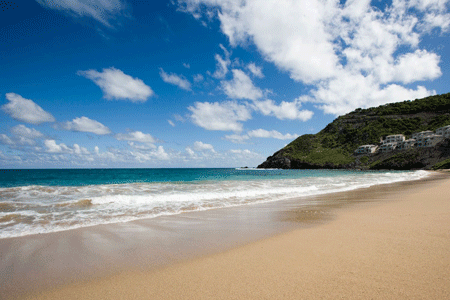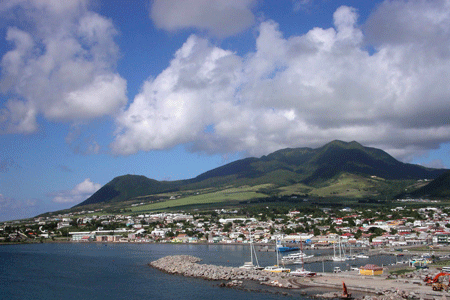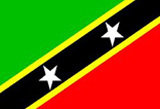One of the British Leeward Islands, St Kitts is one of the Caribbean’s pearls.
Once an illustrious sugar colony, it now focuses its efforts on being a tropical paradise. And it excels in every sense, with its seductive blend of blonde sands and duck-egg blue seas.
Away from the shores though, you’ll find plenty of historic sights to tick off your checklist. Or why not pop across to the neighbouring island of Nevis, which is just three kilometres over The Narrows channel?
Hop on a train at the Needsmust Station, and St Kitts Railway will take you on a tour of the island’s best bits. You’ll chug over ravines 300-feet-deep, circle Mount Liamuiga volcano and take a sneak peek at the island’s black-sand beaches.
Soak up the jaw-dropping views over lush sugar cane fields from the 17th-century Brimstone Hill Fortress. Once known as the Gibraltar of the West Indies, this major British garrison was abandoned in 1850. Now, it’s been restored back to its grand former self, with cannons, swords and the like all on display.
Sunbathe your way through the day on one of St Kitts’ beaches. There’s a selection of white sand spots like Turtle Beach and black sand spaces like Pump Bay. Alternatively, see if the grass is greener on the other side of The Narrows Channel. This is where St Kitts’ tropical sister island, Nevis, simmers in the sea.
|
|
Delve deeper, and St Kitts turns out to have special treasures. One is the colossal Brimstone Hill Fortress National Park, a military bastion and World Heritage Site dating from 1690 that has been dubbed the “Gibraltar of the West Indies”.
The name of the island's dishevelled capital, Basseterre, is a reminder that the island was settled by the French as well as the English in the 1620s. Tobacco, indigo and then sugar were grown on the historic Wingfield Estate, where the ruins of a mighty water-powered mill have been unearthed.
The sugar industry survived until 2005, and a unique legacy of this is the St Kitts Scenic Railway where passengers can ride for 18 miles along a narrow gauge line built to transport cane.
Today the island lives by tourism, a transformation that appears to have been achieved with record speed. St Kitts now welcomes a steady stream of cruise ships and has a 394-room Marriott resort and casino. Major luxury property developments, along with a private jet terminal, are taking shape.
The abiding mood, however, remains one of green hills, warmth and easy living. Crowned by the 3,972ft peak of Mount Liamuiga, St Kitts covers just 68 square miles and over a quarter of its land is protected.
Its restaurants serve good fresh fish and there is plenty to enjoy from touring botanical gardens to zip-lining. Above all, this an island that will suit travellers who like to explore rather than flop on a beach.
High season on St Kitts runs from mid-December to April when the cost of accommodation peaks and the weather is at its best.
Rates drop in summer, but due to the limited number of direct flights from the UK you'll have to travel outside of the school holidays to get the best deal.
While the Caribbean hurricane season officially runs from June to November, September and October are the most likely months to encounter major storms. Some hotels and restaurants close for a few weeks during this quiet period.
St Kitts is an island with a great variety of attractions, from hiking to golf to historic sites. It is enjoyable at any time of year with its warm seas and sunny skies.
Consider visiting when the island is in party mood – popular events include the annual St Kitts Music Festival at the end of June, the St Kitts Carnival (mid-December to early January), and international cricket matches at the Warner Park Stadium in Basseterre. |











